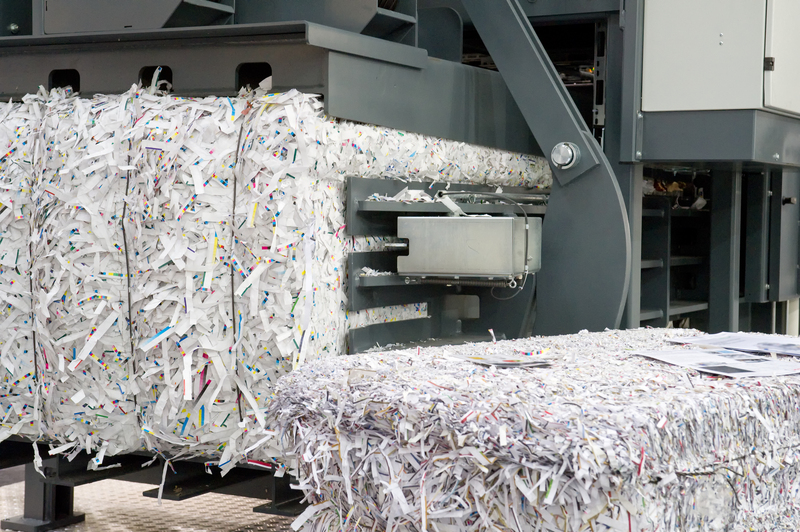Reducing Your PPE Footprint Through Safe and Sustainable Disposal Methods
The ongoing use of Personal Protective Equipment (PPE) has proven critical in protecting individuals and communities across various sectors, from healthcare to manufacturing. However, the significant increase in PPE usage--especially since the COVID-19 pandemic--has escalated environmental challenges. Discarded masks, gloves, gowns, and face shields now represent a persistent waste problem. This article explores how to minimize your PPE footprint through efficient, safe, and eco-friendly disposal methods, giving comprehensive, actionable solutions for businesses and individuals alike.
Understanding the Environmental Impact of PPE Waste
Single-use PPE items are primarily composed of synthetic polymers such as polypropylene and polyethylene. While these materials provide excellent protection and durability, they are notorious for their persistence in landfills and natural environments, taking hundreds of years to decompose. Improper disposal can lead to soil and water pollution, pose threats to wildlife, and contribute to the global plastic crisis.
- Plastic Pollution: PPE, especially face masks and gloves, frequently winds up in oceans and rivers, harming marine life.
- Landfill Overload: The overwhelming increase in PPE waste since 2020 strains landfill capacities and hinders recycling operations.
- Incineration Concerns: Burning PPE reduces volume but emits harmful gases and toxins, exacerbating air pollution.
- Human Health Risks: Contaminated PPE can expose waste handlers, animals, and the public to pathogens if not properly managed.
The crucial question: What are the best ways to responsibly reduce and dispose of PPE waste?

PPE Recycling: A Sustainable Step Forward
While recycling traditional plastics is well-understood, recycling PPE presents unique challenges due to its composition and potential contamination. However, innovative PPE recycling programs are emerging:
Industrial-Scale PPE Recycling
- Specialized facilities now accept used PPE--including masks, aprons, and gloves--and process them into new plastic products like benches, road surfaces, or flowerpots.
- Pilot programs in hospitals and airports involve dedicated PPE bins to separate recyclable PPE from general waste.
- Some companies, like TerraCycle, offer PPE recycling boxes--simply fill the box and send it back for processing.
Barriers to Recycling PPE
- PPE contaminated with bodily fluids or hazardous substances typically cannot be recycled and must be processed as medical waste.
- Lack of public awareness and insufficient infrastructure mean most used PPE still ends up in landfills or incinerators.
Despite these barriers, participation in recycling programs is a powerful way to reduce your PPE disposal footprint. Businesses and organizations can establish relationships with local or national PPE recycling initiatives to align with sustainability goals.
Safe and Sustainable Alternatives to Single-Use PPE
You can limit PPE waste before disposal by exploring eco-friendly PPE alternatives whenever possible:
- Reusable PPE: Reusable face masks, gowns, and coveralls--made from washable, durable materials--are suitable for many applications. When properly sanitized, they deliver excellent protection with drastically less waste.
- Biodegradable PPE: Advances in material science have yielded biodegradable masks and gloves. Made from natural fibers or plant-based polymers, these products break down in composting facilities--significantly minimizing your PPE environmental footprint.
- Product Innovation: Manufacturers are developing PPE products with reduced plastic content and enhanced end-of-life options (such as composting or closed-loop recycling).
Best Practices for PPE Collection, Segregation, and Safe Disposal
Correct handling and segregation of PPE are essential both for public health and minimizing environmental impact. Follow these best practices at home, in business, or at the community level:
For Individuals
- Dispose of Contaminated PPE Properly: Never litter PPE in public spaces. Place used items in designated bins. If there are no special bins, tie PPE in a plastic bag and dispose of it in the general waste--never in recycling, unless specifically accepted.
- Opt for Reusable PPE When Possible: Wash cloth face covers and reusable gloves regularly following manufacturer instructions.
- Flatten Face Masks and Snip Ear Loops: Before discarding, flatten masks and trim ear loops to prevent wildlife entanglement.
- Look for Special PPE Drop-Off Locations: Some pharmacies and retailers now provide PPE disposal bins.
For Businesses and Organizations
- Establish PPE Collection Points: Provide clearly labeled bins for PPE waste, ideally at building entrances/exits.
- Educate Employees and Visitors: Display signage on appropriate PPE disposal methods to encourage compliance.
- Segregate PPE from Other Waste: Do not mix PPE waste with recyclables or food/organic waste.
- Partner with Authorized PPE Disposal/Recycling Services: Use professional services to ensure PPE is either safely incinerated, recycled, or treated according to regulations.
- Keep Records: Track PPE purchases and disposal quantities to audit your organization's PPE waste footprint.
For Healthcare Facilities
- Strictly follow national and regional medical waste management protocols.
- Use color-coded bins and trained staff to prevent cross-contamination.
- Where possible, implement closed-loop systems, returning used PPE to licensed processing facilities for recycling or safe destruction.
Understanding PPE Waste Disposal Options
Let's examine the main routes for safely reducing and disposing of PPE waste:
1. Incineration
The most widespread medical PPE disposal method. Incineration at high temperatures sterilizes and reduces the volume of waste. However, it must be done at certified facilities to control emissions and avoid dangerous by-products such as dioxins and furans.
2. Landfill Disposal
Most non-recyclable PPE ends up in landfills. Proper containment and non-mixing with recyclables are crucial to minimize leaching and wildlife hazards. While not sustainable, it remains necessary when safer or greener systems are unavailable.
3. Autoclaving
Autoclaving uses pressurized steam to disinfect used PPE, particularly in medical environments. After autoclaving, some PPE materials may be further processed for recycling where facilities allow.
4. Chemical Disinfection
In certain instances, PPE is treated with chemical disinfectants before disposal to ensure neutralization of pathogens.
5. Advanced Pyrolysis and Gasification
Cutting-edge technologies that thermally break down PPE waste into basic chemicals or energy, reducing landfill use and potentially recovering useful products. This area is rapidly growing but not yet widely accessible.
Brand and Policy Leadership - Driving Systemic Change
Manufacturers, governments, and large organizations play a critical role in lowering the environmental impact of PPE:
- Eco-Design and Producer Responsibility: Policies can require PPE producers to design for recyclability and participate in end-of-life collection schemes.
- Public Procurement Initiatives: Government agencies can prioritize sustainable PPE, influencing market trends and supply chains.
- Clear Labeling: Mandate clear disposal and recycling guidance on PPE packaging.
- Research Funding: Support for sustainable material development and waste processing innovation is essential.
Key Tips to Reduce Your PPE Waste Footprint
- Assess PPE Needs: Avoid overuse by training staff and users on when PPE is truly necessary.
- Choose Reusables or Eco-Alternatives: Whenever possible, switch to reusable or compostable PPE products.
- Set Up Proper Collection & Disposal Channels: Collaborate with reputable contractors or recycling companies to manage your PPE waste stream.
- Advocate and Inspire: Speak to suppliers about greener PPE, and share your progress to encourage wider adoption of sustainable practices.
- Stay Informed: Regulations and recycling options evolve rapidly. Keep abreast of local developments for new opportunities to dispose of PPE sustainably.

Future Directions in PPE Sustainability
Research and innovation are rapidly transforming the landscape of safe PPE disposal and reduction:
- Biodegradable Polymers: Next-generation PPE made from renewable or compostable materials could become mainstream.
- Automated PPE Waste Sorters: AI-powered sorting systems enhance recycling rates at large waste facilities.
- Circular Economy Initiatives: Businesses take back used PPE, recycle it, and reintegrate the materials into new products.
Conclusion: Ensuring Safety While Protecting the Planet
By reducing your PPE environmental footprint through safe and sustainable disposal methods, you can improve operational efficiency, meet regulatory obligations, and help preserve our natural world. Whether by recycling, switching to greener PPE, or supporting innovative policies, every action counts. Prioritizing safe, responsible, and eco-friendly PPE disposal is a tangible way to blend public health needs with essential environmental stewardship.
```